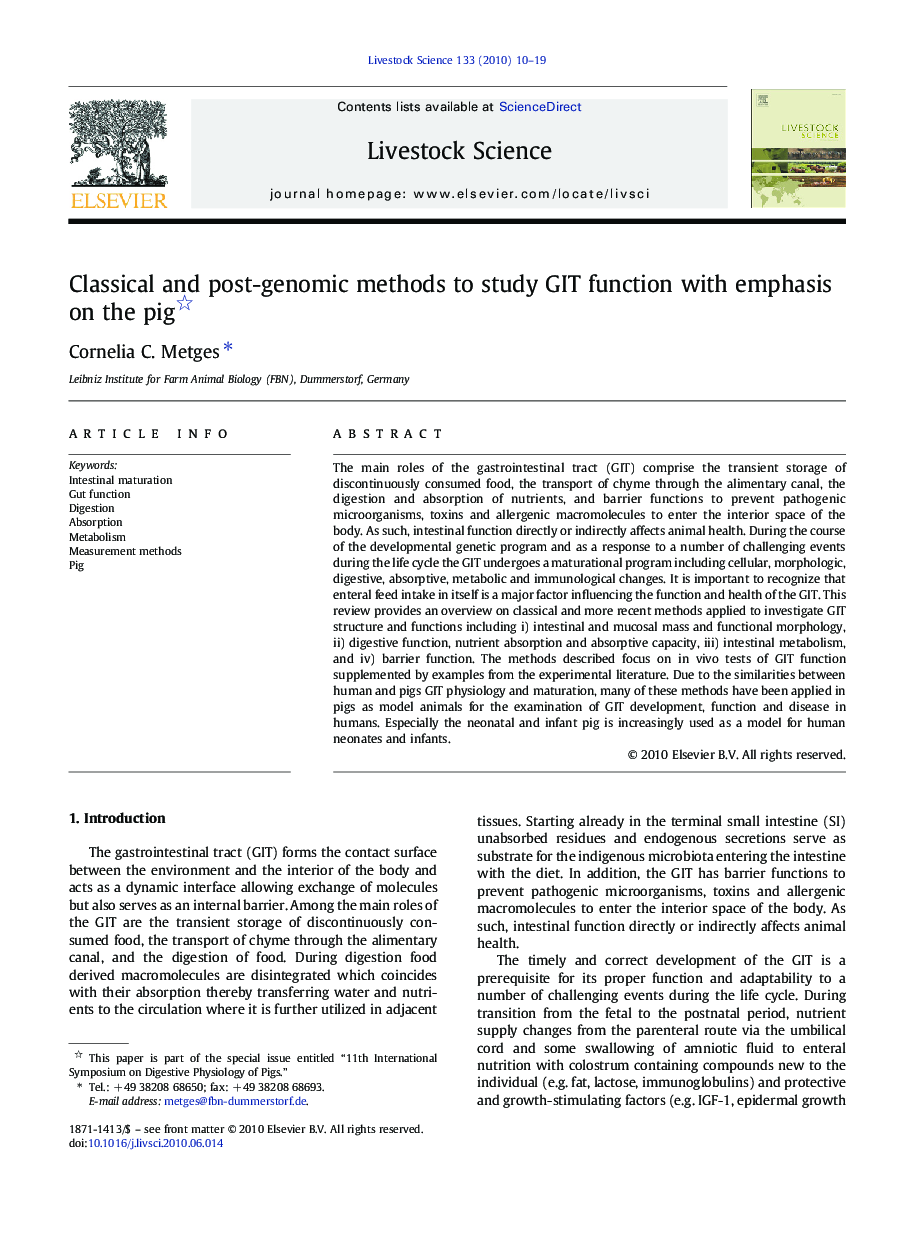| کد مقاله | کد نشریه | سال انتشار | مقاله انگلیسی | نسخه تمام متن |
|---|---|---|---|---|
| 2447676 | 1553999 | 2010 | 10 صفحه PDF | دانلود رایگان |

The main roles of the gastrointestinal tract (GIT) comprise the transient storage of discontinuously consumed food, the transport of chyme through the alimentary canal, the digestion and absorption of nutrients, and barrier functions to prevent pathogenic microorganisms, toxins and allergenic macromolecules to enter the interior space of the body. As such, intestinal function directly or indirectly affects animal health. During the course of the developmental genetic program and as a response to a number of challenging events during the life cycle the GIT undergoes a maturational program including cellular, morphologic, digestive, absorptive, metabolic and immunological changes. It is important to recognize that enteral feed intake in itself is a major factor influencing the function and health of the GIT. This review provides an overview on classical and more recent methods applied to investigate GIT structure and functions including i) intestinal and mucosal mass and functional morphology, ii) digestive function, nutrient absorption and absorptive capacity, iii) intestinal metabolism, and iv) barrier function. The methods described focus on in vivo tests of GIT function supplemented by examples from the experimental literature. Due to the similarities between human and pigs GIT physiology and maturation, many of these methods have been applied in pigs as model animals for the examination of GIT development, function and disease in humans. Especially the neonatal and infant pig is increasingly used as a model for human neonates and infants.
Journal: Livestock Science - Volume 133, Issues 1–3, September 2010, Pages 10–19